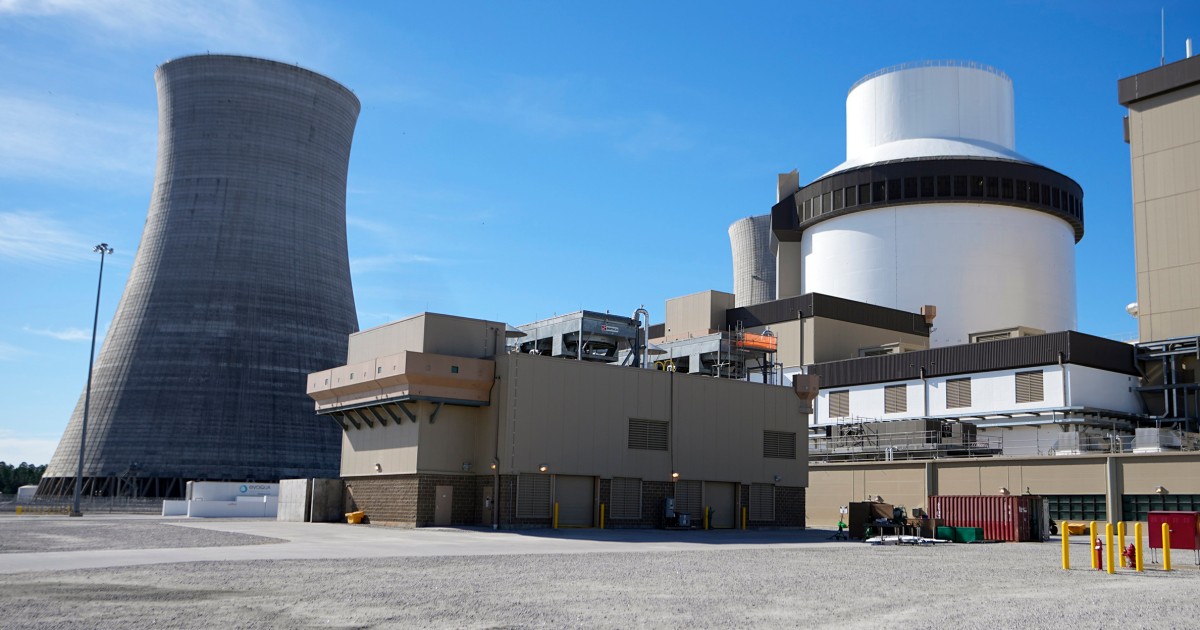First U.S. nuclear reactor built from scratch in decades enters commercial operation in Georgia::ATLANTA — A new reactor at a nuclear power plant in Georgia has entered commercial operation, becoming the first new American reactor built from scratch in decades.



Let’s play around with the thought of powering all of America with renewables. America’s coal, gas, petroleum and nuclear plants generate a combined baseload power of 405 GWavg, or “gigawatts average.” (Remember, a gigawatt is a thousand megawatts.) Let’s replace all of them with a 50 / 50 mix of onshore wind and CSP (solar), and since our energy needs are constantly growing, let’s round up the total to 500 GWs, which is likely what we’ll need by the time we finish. Some folks say that we should level off or reduce our consumption by conserving and using more efficient devices, which is true in principle. But in practice, human nature is such that whatever energy we save, we just gobble up with more gadgets. So we’d better figure on 500 GWs.
To generate this much energy with 1,000 of our 500 MW renewables farms, we’ll put 500 wind farms in the Midwest (and hope the wind patterns don’t change…) and we’ll put 500 CSP farms in the southwest deserts—all of it on free federal land and hooked into the grid. Aside from whatever branch transmission lines we’ll need (which will be chump change), here’s the lowdown:
Powering the U.S. with 500 wind and 500 CSP farms, at 500 MWavg apiece.
35,135 sq. miles (169 mi / side)
(the size of Indiana)
60-year cost ……… $29.25 Trillion
That’s 29 times the 2014 discretionary federal budget.
If we can convince the wind lobby that they’re outclassed by CSP, we could do the entire project for a lot less, and put the whole enchilada in the desert:
Powering the U.S. with 1,000 CSP farms, producing 500 MWavg apiece.
24,234 sq. miles (105.8 mi / side)
(the size of West Virginia)
60-year cost ……. $18.45 Trillion
#That’s to 18 times the 2014 federal budget.
Or, we could power the U.S. with 500 AP-1000 reactors.
Rated at 1,117 MWp, and with a reactor’s typical uptime of 90%, an AP-1000 will deliver 1,005 MWav. Five hundred APs will produce 502.5 GWav, replacing all existing U.S. electrical power plants, including our aging fleet of reactors.
The AP-1000 uses 5,800 tonnes of steel, 90,000 tonnes of concrete, with a combined carbon karma of 115,000 t of CO2 that can be paid down in less than 5 days. The entire plant requires 0.04km2, a patch of land just 200 meters on a side, next to an ample body of water for cooling. (Remember, it’s a Gen-3+ reactor. Most Gen-4 reactors won’t need external cooling.) Here’s the digits:
1.95 sq. miles (1.39 miles / side)
(1.5 times the size of Central Park)
60-year cost ……… $2.94 Trillion
#That’s 2.9 times the 2014 federal budget.
Small Modular Reactors may cost a quarter or half again as much, but the buy-in is significantly less, the build-out is much faster (picture jetliners rolling off the assembly line), the resources and CO2 are just as minuscule, and they can be more widely distributed, ensuring the resiliency of the grid with multiple nodes.
And this is without even mentioning MSRs.
Was this project a complete shitshow of sheldon before seen-proportions?
Yes.
Does this mean that we should make the move towards powering the US from 100% renewables instead?
Well if you hate math and logic enough to even consider it, sure. Go ahead.
Uh.
The nuke plant is expensive. Renewables aren’t. And your argument ist essentially “but based on made up numbers that illustrate how inexpensive nuke plants could be, nuke plants could be much less expensive! Duh!”
Yeah, no. Build renewables.
I’m not quite why the argument is “nuclear or renewables.” It should be nuclear AND renewables.
Renewable energy generators have improved significantly in the last two decades. I’m sure they will continue to improve.
Nuclear power is a hell of a lot cleaner than coal. And it seems nuclear power plants have improved tremendously. We should use them.
It really shouldn’t be. Nuclear plants don’t emit co2, that’s right and that’s nice. However, they have so many disadvantages that I can’t wrap my head around how they could be considered a viable alternative to renewables.
There’s my unpopular opinion.
Solar doesn’t perform at its nameplate capacity, so you have to overbuild the capacity by about 200% in order to achieve the same baseload as a constant output thermal plant.
And that doesn’t even touch on the fact that solar doesn’t work at night, and the capacity is much lower during the different seasons in Northern latitudes.
So you either build a shitton of batteries, provide backup power sources, or tell people not to use energy during the winter. According to Tesla, they sell their Megapack batteries for around $1/watt-hour of storage. Still, lets figure a 1 Ghwr battery for every 1 GW of installed capacity of solar. That should give the system a few hours of runtime after it gets dark.
So instead of your 500 GW solar capacity, we need 1,000 GW. And 1,000 Gwhr of batteries. $68.50 Trillion worth of solar + $1 Trillion for batteries.
However, I’m a little skeptical on your solar costs. Utility scale solar is typically cited as between $1-$2/watt installed. So for 1,000 GW that gives you $1 Trillion installed. Which is a lot of money, but less than Biden’s student load forgiveness plan.
I personally believe, after spending 3 years listening to the Energy Gang podcast, that decarbonizing the energy system is an ‘all-hands on deck’ emergency that will require every trick in the book to tackle. We will likely max out every type of cheap and readily financeable energy system on this road.